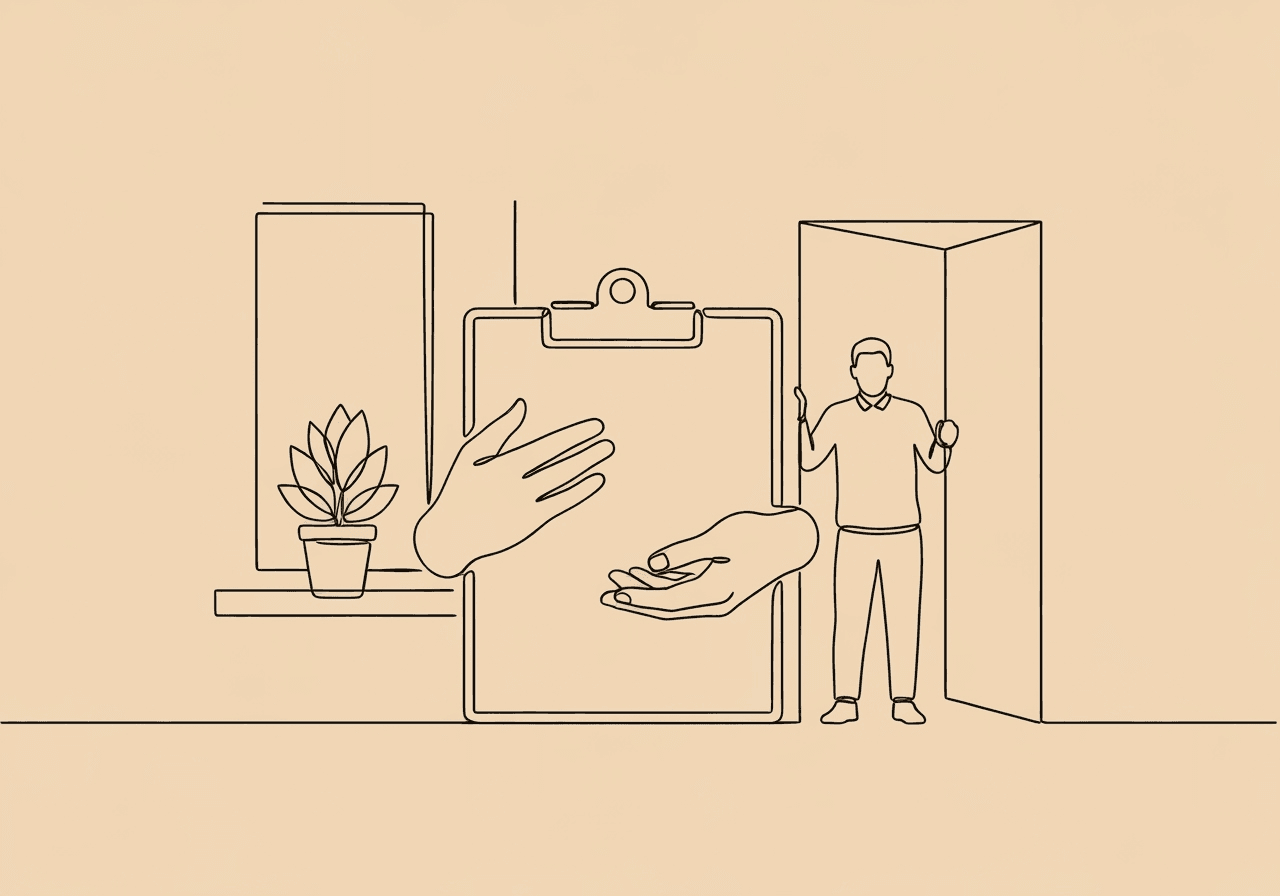Insurance-Ready ABA Notes: Templates & Tips for Compliance

Nothing kills your workflow quite like an insurance claim denial. For many ABA providers, the top frustration is claim rejections due to insufficient documentation. Billing analyses show this issue can be responsible for up to 42% of denied claims. When session notes are incomplete, you are inviting preventable denials.
Crafting insurance-ready ABA session notes is about more than just detail. It requires strategically meeting payer requirements while clearly showing medical necessity. The difference between approval and denial often rests on how well you tell the story of client progress.
Here are the key takeaways for writing compliant notes:
- Focus on objective, measurable data instead of subjective opinions.
- Clearly link every intervention back to a specific treatment plan goal.
- Quantify client progress with numbers, percentages, and frequencies.
- Complete documentation on the same day as the session to ensure accuracy.
What Makes ABA Session Notes Payer-Approved?
Insurance-ready ABA session notes create a compelling narrative that reviewers can quickly understand. Your notes must include several critical elements to be considered compliant.
According to billing guidelines, your notes must include:
- Objective and measurable descriptions of behavior.
- Direct connections between interventions and treatment goals.
- Specific data demonstrating progress or continued medical necessity.
- Clear proof that services do not duplicate other therapies.
Insurance reviewers work under intense time pressure. They scan dozens of claims an hour. If they cannot immediately spot medical necessity, your claim gets flagged. Your documentation must be clear, concise, and compelling to earn approval.
What Are the Essential Elements of a Compliant Note?
How Should I Structure My Session Note?
Start with rock-solid basics that give reviewers no reason to doubt your claim. Ensure every note contains these non-negotiable documentation requirements:
- Client's full name and date of birth.
- Session date, precise start and end times, and service location.
- Your name and current credentials (e.g., RBT, BCBA).
- The exact CPT code being billed.
- Total billable time that matches your claim.
How Do I Document Goals and Interventions?
This section trips up more providers than any other. Avoid vague generalizations and use focused language that highlights medical necessity. For instance, a weak note might say, "Worked on communication skills." This is a claim-killer.
An approval-worthy note is specific: "Targeted independent manding for preferred items using naturalistic teaching. The current goal is to increase from 2 to 5 instances per hour." This language connects the intervention directly to a measurable goal.
Similarly, instead of "Addressed challenging behaviors," write insurance-gold like: "Implemented differential reinforcement to reduce elopement during classroom transitions. The current baseline is 8 attempts per session, with a treatment target of ≤2 attempts."
How Can I Prove Medical Necessity?
Document the evidence-based ABA techniques you used and how the client responded. Authoritative sources like the American Medical Association provide guidance on documenting behavioral health services. Reviewers need crystal-clear proof of your methodology.
Use template language that payers understand:
- "Applied discrete trial training (DTT) targeting receptive identification of colors."
- "Client achieved independent responses in 78% of opportunities (15/19 trials)."
- "Collected frequency data on target behavior using 10-minute intervals."
What Common Documentation Mistakes Cause Denials?
Mistake #1: Using Subjective Language
Insurance algorithms often flag notes with subjective interpretations. A note like, "Client seemed frustrated and was acting out," invites an instant rejection.
Instead, stick to measurable observations. A compliant version is: "Client engaged in vocal protests (5 occurrences, 2-3 minutes duration) and threw materials to the floor (3 instances) when presented with non-preferred academic tasks."
Mistake #2: Forgetting to Justify Medical Necessity
Every note must justify why ABA services are medically necessary. A vague statement such as, "Client experienced some difficulty with transitions," is too weak.
Connect the behavior to a functional limitation. A medically compelling note reads: "Transition difficulties averaging 45 minutes required a two-staff safety intervention, which prevented client participation in educational programming and created a significant elopement risk."
An ABA Note Template for Insurance Success
A strong ABA note template provides a reliable framework. Use this structure to build compliant and effective notes every time.
- Opening Statement: "Client participated in an ABA therapy session addressing [specific skill domains] from the approved treatment plan. The session targeted goals [X, Y, Z] using evidence-based interventions."
- Intervention Documentation: "Implemented [specific technique] with [prompt level]. Client required [type of support] and achieved [measurable outcome]. Data showed [percentage] accuracy, showing [improvement/maintenance]."
- Progress Summary: "Session performance: [specific data points]. Compared to [baseline/previous session], the client showed [quantified change]. Treatment objectives remain appropriate."
- Professional Conclusion: "Continued ABA services remain medically necessary due to [functional impact of behaviors]. Recommended next session focus: [data-driven plan]."
Master ABA Documentation Tips for Consistent Approvals
For consistent approvals, integrate these ABA documentation tips into your workflow.
Complete your compliant session notes within 30 minutes of service delivery while details are fresh. Billing experts indicate that delayed notes increase denial risks.
For CPT 97155 billing, clearly document when and why you modified protocols. This justifies the higher reimbursement rate for supervisor-delivered services.
ABA Session Notes FAQs
How detailed should my insurance-ready ABA session notes be? Aim for 150-300 words of objective, measurable descriptions. Reviewers prefer concise, data-rich notes. Include enough detail for another BCBA to understand and replicate your approach.
How quickly must I complete session notes? Complete documentation within 24 hours at most. Same-day completion is best. As noted by billing experts, late documentation can trigger denials even if the content is perfect.
Can I use abbreviations in my notes? Use standard abbreviations like "DTT" sparingly. Spell out any technical terms that an insurance reviewer might not recognize to avoid confusion.
Transform Your Documentation Process
Writing compliant session notes doesn't have to be a struggle. Focus on objective language, specific data, and clear connections between your interventions and outcomes.
When you document with insurance requirements in mind, you spend less time on appeals and more time helping clients.
Popular in ABA Session Notes & Tools
- 1
RBT Supervision Documentation: 2025 BACB Guide & Templates
1,5899 min read - 2
Master ABA Medical Necessity Documentation: Avoid Denials
7599 min read - 3
Master ABA SOAP Notes: Guide for RBTs & BCBAs
6819 min read - 4
ABA Documentation Best Practices for RBTs: Essential Tips
6625 min read - 5
Guide to ABA Progress Reports for Insurance Reauthorization
5348 min read
Popular in ABA Session Notes & Tools
- 1
RBT Supervision Documentation: 2025 BACB Guide & Templates
1,5899 min read - 2
Master ABA Medical Necessity Documentation: Avoid Denials
7599 min read - 3
Master ABA SOAP Notes: Guide for RBTs & BCBAs
6819 min read - 4
ABA Documentation Best Practices for RBTs: Essential Tips
6625 min read - 5
Guide to ABA Progress Reports for Insurance Reauthorization
5348 min read
Related Resources
Explore more helpful content on similar topics

RBT Supervision Documentation: 2025 BACB Guide & Templates
Master RBT supervision documentation with the 2025 BACB guide. Learn compliance rules, 5% supervision requirements, telehealth best practices, and free templates for audits and quality care. Download now!

BCBA Session Variation Documentation: Ethical Guide
Learn ethical BCBA session variation documentation for unforeseen circumstances in ABA therapy. Our step-by-step guide and templates ensure BACB compliance and accurate session notes.

Essential 9 Steps for Standardized BCBA Note Templates
Learn 9 essential steps to create standardized BCBA note templates that enhance ABA EHR efficiency and ensure compliance. Streamline session documentation and link seamlessly to treatment goals—start today!